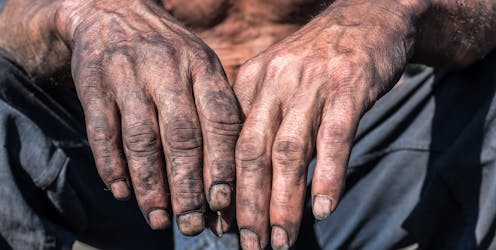Source: The Conversation (Au and NZ) – By Liam Phelan, Senior Lecturer, School of Environmental and Life Sciences, University of Newcastle

Shutterstock
The clock is now ticking on New South Wales’ largest coal mine. BHP has announced it will close its Mount Arthur mine in the Hunter Valley in 2030 – 15 years ahead of its scheduled end of life.
This decision comes after two years attempting to sell the mine, in keeping with BHP’s strategy to divest itself of thermal coal operations.
Read more:
BHP’s offloading of oil and gas assets shows the global market has turned on fossil fuels
Given the collapsing market for coal assets, the lack of interested buyers is not a huge shock. But this announcement is still significant. The end is no longer speculative. There’s a firm deadline for the thousands of workers employed at the mine, and for the surrounding communities.
This use-by date should focus the attention of the local, state and federal governments on the much talked-about need for a just transition for coal communities.
How to assist those communities to survive (and prosper) after coal has been talked about for decades? Now with less than a decade to go, that talk must turn into concrete plans and action.
End of the line for 2,000 workers
The Mount Arthur mine is the one of the biggest coal mines in the world by estimated reserves. Mining began in 2002, extending on existing mining in the area dating back to the late 1960s. Up to 20 million tonnes of thermal coal a year have been extracted. About 2,000 workers are employed at the site.
It’s worth noting BHP only has permits from the NSW government to operate the mine until 2026. So it will need to seek an short extension to keep to its schedule. The NSW government can be expected grant that extension.
The NSW government will probably be glad for the extra time to plan on the transition. It has already been caught off-guard once this year, by Origin Energy’s February announcement of the early closure of its Eraring coal-fired power station in Lake Macquarie, also in the NSW Hunter region.
Federal government planning on just transitions for coal communities, meanwhile, has been stymied by the Coalition’s focus over the past decade on prolonging coal mining as long as possible.
What Labor will do is yet to be seen, though new federal member for the electorate of Hunter, Dan Repacholi, has said his key concern is the welfare of workers.
Three community priorities
Communities in NSW’s Hunter Valley are more than aware that time is running out for coal mining. Last year community workshops were held around the region to discuss what is needed for a just transition to occur. Three priorities emerged from those discussions:
- a local authority to coordinate transition efforts
- funding for a “flagship” job-creation project
- more resources for technical and vocational education.
Read more:
3 local solutions to replace coal jobs and ensure a just transition for mining communities
The first priority has been somewhat met by the NSW government creating a Royalties For Rejuvenation Fund and Expert Panel, which has $25 million a year to spend on mining communities.
But compare that to the $660 million the Western Australian government has allocated to fund the coal transition of a single town, Collie.
Lessons from the past
Research shows the best transitions are those that are equitable, just, and well-planned.
The good thing is that the Hunter Valley has experience with transition, from when BHP shuttered its Newcastle steelworks in 1999. While not a perfect case study, it does provides lessons for today.
Particularly important is a collaborative approach between unions and management. This ensured workers had support for redundancy, retraining, financial planning and finding new employment. A Hunter Valley alliance between unions and environmental groups is pushing for the same level of collaborative planning.
Without a co-operative and inclusive approach, drawing on local knowledge, no transition plan is likely to succeed.
![]()
Kimberley receives an Australian Government Research Training Program Stipend as part of her PhD programme with the University of Technology, Sydney. She is affiliated with Hunter Renewal and Hunter Jobs Alliance as a volunteer
Liam Phelan does not work for, consult, own shares in or receive funding from any company or organization that would benefit from this article, and has disclosed no relevant affiliations beyond their academic appointment.
– ref. NSW’s biggest coal mine to close in 2030. Now what about the workers? – https://theconversation.com/nsws-biggest-coal-mine-to-close-in-2030-now-what-about-the-workers-185292








